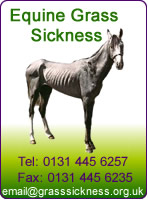
And photographs, if you have any.
Horseytalk.net Special Interview
Dr Madeleine Campbell
BVetMed (Hons), MA (Oxon), PhD DipECAR, MRCVA, President of the British Equine Veterinary Association
She first saw him through a dissecting microscope. He was just one-fifth the size of a pin-head.
Next she saw him with the aid of an ultra-scanner when he was a 12-day-old embryo.
She delivered him when he was born.
His recipient mother died within four days of his birth so she bottle-fed him every two-hours for the first three-months of his life.
Now he is being broken in
In two-months time she is hoping to ride him for the first time in Ashdown Forest, East Sussex..
There can’t be many riders in the world who can boast they have known and loved their horse since before it was born.
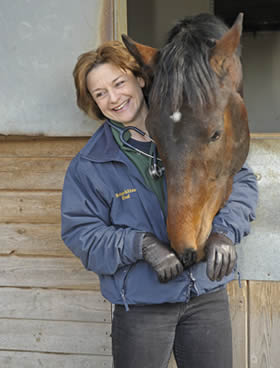 The
horse is Tribute Tertius (pictured left with Madeleine).
The
horse is Tribute Tertius (pictured left with Madeleine).
The lucky owner is Dr Madeleine Campbell BVetMed (Hons), MA (Oxon), PhD DipECAR, MRCVA, President of the British Equine Veterinary Association, the only person in the UK who is a recognised by both the Royal College of Veterinary Surgeons and the European College of Animal Reproduction as a specialist in equine reproduction and the owner and driving force behind Hobgoblins Stud, which is tucked away behind Duddleswell Tea Rooms in Ashdown Forest.
“He is genuinely priceless,” says Madeleine. “He is my dream horse. Not many people can say they have bred their dream horse. Every horse, I know, is unique but to me Tertius is a one-off: irreplaceable. I’m incredibly lucky. He is the product of state-of-the-art technology and a fabulous gene pool.”
Tertius’ father was Millenium, the most successful UK-based dressage stallion ever. His sire was Manstein (Matrose) a Hannoverian State Premium Stallion. Owned by Laura Richardson, Millenium competed as a GBR team member at the World Equestrian Games, European Championships, Nations Cup and in numerous International Grand Prix. Twice in 2000 and 2004 he was short-listed for the Olympics. He won the Spanish Sunshine Tour International Grand Prix and no less than seven Premier League Grand Prix. When it comes to grading he scored all 9s for rideability, prescence, scope, quality and movement.
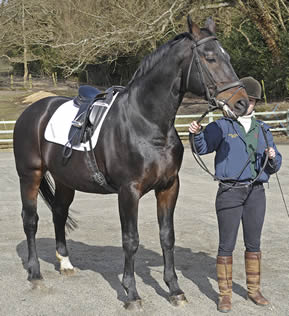 Tertius’ is
also the grand-son of Madeleine’s first pony, Hershey,
a chocolate coloured Morgan her parents bought for her as
a two-year-old and who she kept until she died when she was
26-years-old.
Tertius’ is
also the grand-son of Madeleine’s first pony, Hershey,
a chocolate coloured Morgan her parents bought for her as
a two-year-old and who she kept until she died when she was
26-years-old.
“It’s amazing,” says Madeleine. “It’s a big thrill. It’s also a bit weird having the three generations, because I seem to know exactly how Tertius is going to react to any situation: working with Tertius is a relationship based on three generations of trust. But I’m sure he’s going to be outstanding. He’s got a wonderful temperament.”
Millenium, the most successful
UK-based dressage stallion ever >>
The other amazing thing is that Madeleine comes from a completely non-horsey background.
Born and brought up in Blackheath, South London, her father was the Conservative MP for Worthing and a Government Minister. Her mother was a lawyer. She discovered ponies, by chance, when she was a child on holiday at Charmouth, near Lyme Regis in Dorset. Back home, she started going to the Willow Tree Riding School in Burnt Ash, near Lee Green. When she was 12-years-old her parents bought her a pony, Roulette, 13.2 hh, an Arab X Welsh on condition they sold him before she took her 0-levels. Of course, they didn’t.
During holidays to the United States, Madeleine became obsessed with the Morgan horse. Back home, her parents now bought her Hershey, the chocolate coloured Morgan, who was born in Vermont on the East Coast of the US.
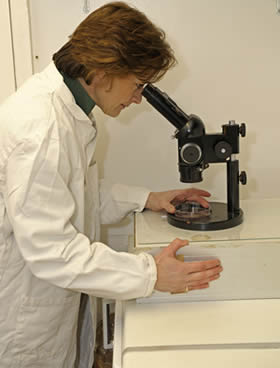 From
then on wherever she went, Hershey went with her. When she
did her 0-levels. When she did her A-levels. When she went
to Oxford University. When she went to Veterinary College.
From
then on wherever she went, Hershey went with her. When she
did her 0-levels. When she did her A-levels. When she went
to Oxford University. When she went to Veterinary College.
“She was a fantastic character,” says Madeleine. “We did everything. Endurance. Scurry. Hacking out. Driving. Showing. Everything.”
After she finished at Oxford, Madeleine was doing everything she could to get into the British Modern Pentathlon Team, which covers not only riding but also swimming, running, shooting and fencing. But the decision was taken for her. She went skiing in France and smashed her knee. It was only while she was recovering in hospital that she decided to become a vet.
“I called all the vet schools. They all said, No,” she says. “I then called the Royal Veterinary College. They said, We’ll take you if you get two science A-levels. I didn’t have any science A-levels at all. At Oxford I studied Modern History and Economics. So I went to one of those crammer colleges in London and got my two A-levels.
“I went to the Royal Veterinary College. I’ve never regretted it. I was there for five-years. I came second. Then I went back and did my PhD in equine reproduction. Why equine reproduction? I don’t know. It just fascinated me from the beginning, and I was inspired by my excellent teachers, Professor David Noakes and Professor Gary England. It’s probably because reproduction is the most self-contained subject you can take.”
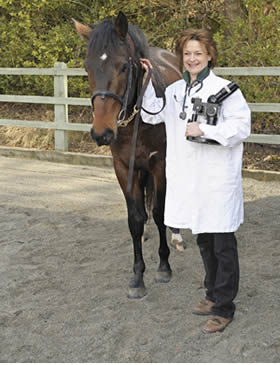 Since
she qualified as a veterinary surgeon in 1996, Madeleine
says she has seen enormous leaps and bounds in artificial
equine reproduction technology.
Since
she qualified as a veterinary surgeon in 1996, Madeleine
says she has seen enormous leaps and bounds in artificial
equine reproduction technology.
In l996, ultrasound was still a fairly new technology, and AI was not widely accepted: neither was the use of frozen semen. Pregnancy rates were only 30-per-cent per cycle Today AI and ultra-sound are widely accepted. Success rates using frozen semen at Madeleine’s Practice have soared to c60% per cycle.
Artificial reproduction technology has also become more mainstream. British breeders can now compete on an international basis with other breeders
The advent of embryo transfer means that mares are no longer out of action for anything up to a year while they are pregnant. They can carry on competing non-stop throughout the year.
People can now breed their own dream horse which can be either a child’s pony or a world champion the likes of Tortilas, the current wonder Dutch dressage champion.
It is even possible to compile a rare breeds bank of frozen
semen and potentially frozen embryos to ensure breeds survive
and continue.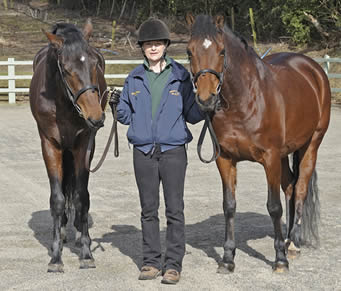
Today, not surprisingly, Hobgoblins is recognised as one of the most specialised providers of veterinary equine reproduction services in the country with state-of-the-art facilities including everything from a mare examination area to a fully equipped embryo laboratory.
Their list of champions bred at Hobgoblins include Hobgoblins Late Night and Hobgoblins Honour Bound, both BEF Futurity highest score winners.
 “It’s
hard work,” says Madeleine. “Especially during
the breeding season from March through to the end of August.
Seven days a week. Sometimes literally 24-hours a day. But
I wouldn’t change it. It’s wonderful. Who knows,
I might even breed a world champion dressage horse. That
would be fabulous.”
“It’s
hard work,” says Madeleine. “Especially during
the breeding season from March through to the end of August.
Seven days a week. Sometimes literally 24-hours a day. But
I wouldn’t change it. It’s wonderful. Who knows,
I might even breed a world champion dressage horse. That
would be fabulous.”
Father, Son & Mother
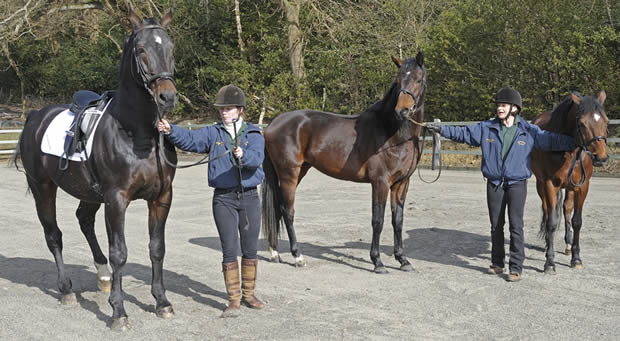
Buy your Horsey books & clothing in the Horsetalk Shop |
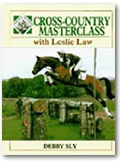 |
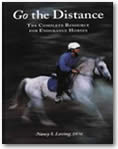 |
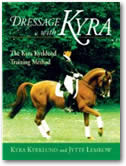 |
| Buy it here | Buy it here | Buy it here |







